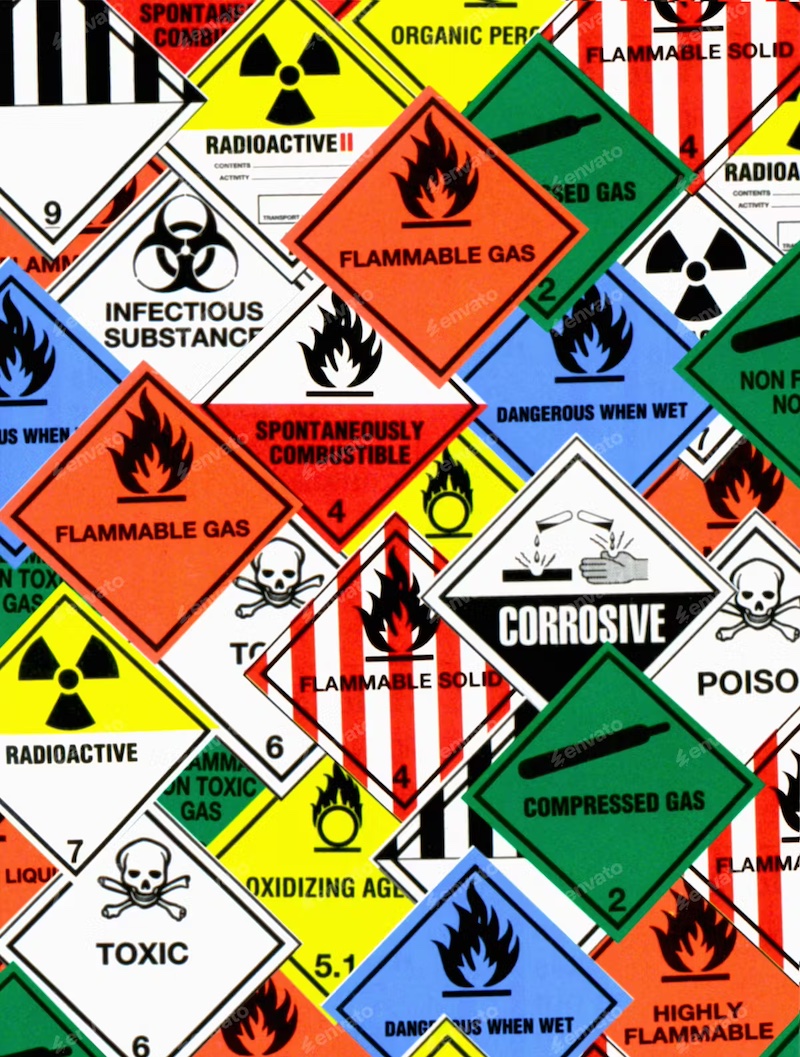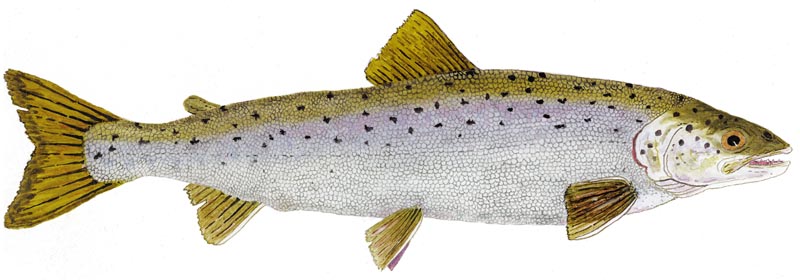
Atlantic salmon caught in Quebec – commissioned art by Thom Glace – avid angler, conservationist, and world-renowned watercolorist/illustrator. Website . . .
New Brunswick group drops attempt to eradicate invasive fish in Miramichi watershed
The group, composed of Indigenous and non-governmental organizations, said Friday it would abandon the rotenone program. Members were unable to convince the provincial government to take the lead on the project to eradicate the non-native species.
Neville Crabbe, spokesman for the Working Group on Smallmouth Bass Eradication, said some smallmouth bass were caught outside the treatment area this summer, suggesting the fish have spread beyond the program’s target zone.
“Those two factors were the major considerations in our decision,” Crabbe said in an interview.
Smallmouth bass, first detected in the Miramichi watershed in 2008, can alter ecosystems by preying on native fish species such as Atlantic salmon and brook trout.
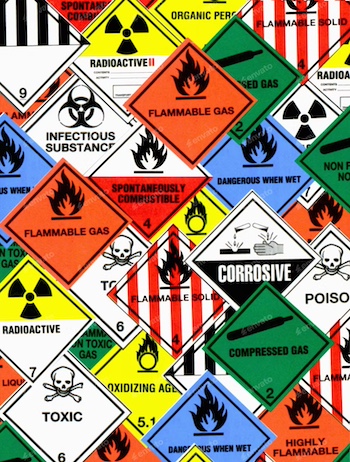
A rotenone treatment in Lake Brook and along a 15-kilometre section of the Southwest Miramichi River in September 2022 killed hundreds of fish: 514 Atlantic salmon and 32 smallmouth bass. Three adult salmon died while most were younger — 504 parr and seven grilse.
The results were included in the group’s December report to the federal Fisheries Department, noting that 15 smallmouth bass were found dead just outside the treatment area.
Crabbe, who is also executive director of communications for the Atlantic Salmon Federation, said the results showed the presence of smallmouth bass across the treatment area, adding that a greater number of salmon were killed compared with bass because salmon are more established in the watershed.
A rotenone treatment in Lake Brook and along a 15-kilometre section of the Southwest Miramichi River in September 2022 killed hundreds of fish: 514 Atlantic salmon and 32 smallmouth bass. Three adult salmon died while the majority were younger — 504 parr and seven grilse.
Evidence
The results were included in the group’s report to the federal Fisheries Department in December, which also notes that 15 smallmouth bass were found dead just outside the treatment area.
Crabbe, who is also executive director of communications for the Atlantic Salmon Federation, said the results showed the presence of smallmouth bass across the treatment area, adding that a greater number of salmon were killed compared with bass because salmon are more established in the watershed.
Some Atlantic salmon died
A rotenone treatment in Lake Brook and along a 15-kilometre section of the Southwest Miramichi River in September 2022 killed hundreds of fish: 514 Atlantic salmon and 32 smallmouth bass. Three adult salmon died while the majority were younger — 504 parr and seven grilse.
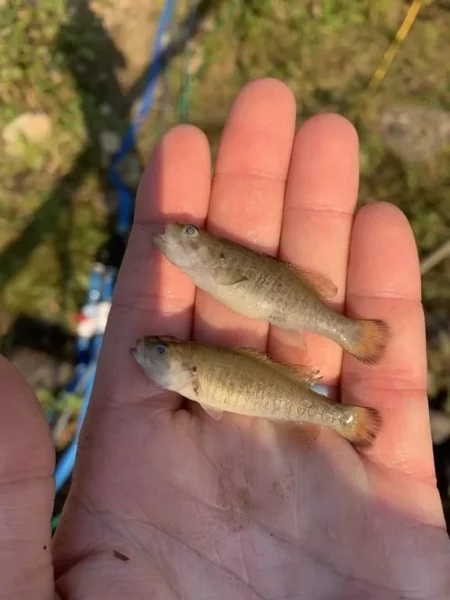
Two young-of-the-year smallmouth bass, as shown in this handout image, removed from the Southwest Miramichi River after a rotenone treatment last fall. Smallmouth of several age classes were observed throughout the area. THE CANADIAN PRESS/HO-Atlantic Salmon Federation-Nathan Wilbur
But Austin Greenlaw, who owns a cottage on Miramichi Lake and was part of the legal attempts to stop the rotenone use, said Friday that he was pleased to see the end of a “foolhardy” plan.
Many not in favour of using pesticid
“We were not in favour of using pesticide to come in here and kill every fish in a lake for questionable results,” Greenlaw said. “If this had gone ahead we were probably looking at multiple applications. This is a relatively large body of water to be doing that in, it’s kind of a complex thing to expect 100 per cent results.”
The retired teacher from Bristol, N.B., said he’d like to see a continuation of the use of net barriers to trap the fish and electro-fishing, which involves temporarily stunning fish with a rod so they can be relocated.
In use since the 1950s, rotenone targets fish gills and inhibits breathing, while leaving birds and mammals unaffected. However, the pesticide will cause all the fish in the treatment area to die.
In late August, nearly one year after Nova Scotia’s Fisheries Department treated a lake with rotenone to eradicate invasive smallmouth bass, there were early signs of success. The department introduced 1,500 litres of a solution containing the pesticide in September 2022 into Dobsons Lake, near Canso, N.S.
Maybe it does work?
Following the treatment, brook trout had been observed naturally migrating upstream, while there had been no signs of smallmouth bass in the lake.
NOTE: Read previous post —-
‘Smallmouth bass can alter the entire ecosystem in several ways. They compete for habitat. They compete for prey. And they also consume native species like trout and salmon, which have been a feature of human life on the Miramichi for thousands of years.’
—- Neville Crabbe for Atlantic Salmon Federation
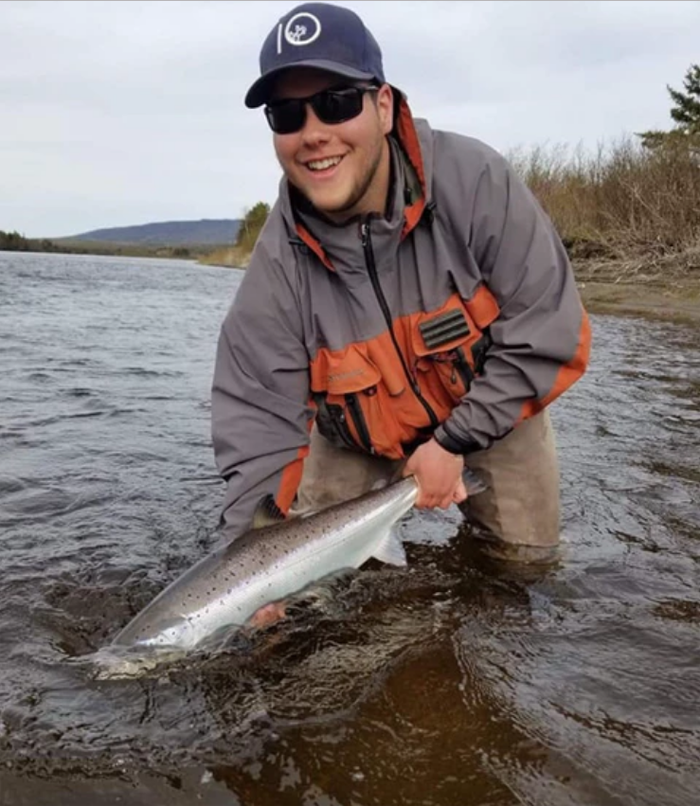
Aaron Rideout releases a gorgeous Atlantic salmon. He says, “This was in the Codroy River, high and with cold water. It was just after the water levels skyrocketed and then dropped back down to fishable levels. Due to that high water flash, we had a slow week fishing, with none being seen or hooked until a morning later in the week when we each hooked one. It was my first time fishing Codroy.” ASF image..


